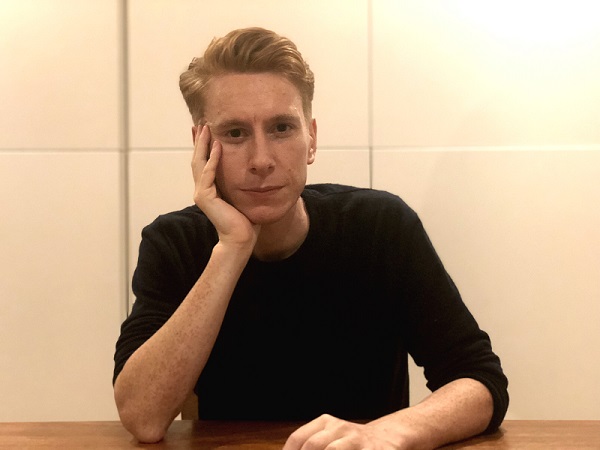By Sarah Bridge / Music Supervisor

How did you get involved in the score/music production for Been So Long?
I’d worked with the director Tinge Krishnan on a number of previous projects including her debut feature Junkhearts, and she mentioned that she was putting together a pitch for a London based musical and asked me whether I had any recommendations for musical references. I was intrigued and after listening to the recordings from the stage musical, was hooked! The songs were funny, honest and moving. We worked together on a ‘mood board’ of musical production references, showing were we might take the songs, and after getting the go-ahead from production company Greenacre and the BFI, I worked on arranging and producing two of the existing musical numbers for a ‘sizzle reel’, to show how the songs could work in cinematic way.
What was your preparation process for the shoot & the challenges involved?
On this project I had two roles; producer and arranger of the existing songs, and composer of the score. During the prep stage I had my music producer hat squarely on. I spent several weeks in the run up to rehearsals arranging and producing demos for the 16 songs in the film. This meant committing to a rough production style as well as finding the best register and key for the actors voices and committing to any tempo curves. The biggest challenge was that both myself and Tinge wanted to use as much on-set singing as possible, primarily for emotional authenticity and also so that there was no audible difference between their speaking voices and their singing voices, smoothing the transition between drama and the song and dance numbers. I worked closely with the sound team and our MD Phil Cornwell to devise specific technical set ups for each song, using earwigs and a combination of backing tracks and on-set electric piano. We also spent a number of weeks tracking all of the vocals for back-up purposes, just in case anything failed on the day. It was a really fun three weeks, as everyone was in the same rehearsal space, actors, dancers and musicians, and everyone popping in to see what everyone else was doing!
Can you talk a little about your role during the shoot and the edit?
I was on set for all of the musical numbers, to make sure we had got decent vocal coverage for all the songs. When I wasn’t shooting I was back in the studio arranging or tweaking backing tracks or recording additional vocals. During the edit, there was a constant back and forth between myself and the editor Pete Crystellis. It was a very dynamic process with the music informing the edit and the edit informing the music. So in effect I was scoring whilst the edit was going on. For a number of songs we had decided to go without click or backing track to allow the actors voices to lead, so we spent a lot of time tempo mapping the the actors phrasing. We also had a number of sync issues arise which required constant monitoring and I worked closely with the pinewood team to correct any issues before picture lock. We were punching way above our weight budget-wise, particularly for a musical, so everyone took on about two or three different roles in addition to their primary one.
The soundtrack features many of the original songs from the stage musical written by Che Walker and Arthur Darvill, what was the process of re-working the songs for the film?
I wanted a production style for the existing songs which honoured the funk and soul heart of the stage musical, but also sounded contemporary and cinematic. We worked with a 12 piece string orchestra and brass ensemble, as well as a full live band, as I wanted the score to reflect the classic and sumptuous look of the cinematography. I also used lots of 808 subs, trap drums and cut up vocal samples and I loved combining them with the more traditional line ups. Like the vocals, I wanted the transition between score and song to be seamless, moving between non-diegetic and diegetic and back again, and worked with songs and score as single combined cues utilising the same instrumentation and set up. Having said that, I also wanted each track to have its own identity, so Gil’s sound world is very classic 60s soul, and Simone’s songs are much starker with more mournful strings and electronic pads. I worked with the producer Shakka on Primus Humanus and he wrote What U Sayin which I added strings and brass to.
What is/was your inspiration? The reference points for the score were pretty diverse from Drake to Thomas Tallis! What really inspires me is mixing things up, mixing European art music with UK garage for example. For the strings I was really inspired by the string arrangements on the Beck albums, as well as the last Radiohead album. However for the starker moments I wanted to achieve a very pure renaissance-like chamber sound, with lots of suspensions that hang in the air, and Vaughan Williams’ Lark Ascending was a big reference for this. For the crazier wig out moments I was inspired by the contemporary UK jazz scene and bands like Melt Yourself Down and The Comet is Coming. I also listen to a lot contemporary UK artists like Mura Masa, Ray BLK, Kwes and Kate Tempest and that also fed into the sound of the score.
Whats up next?I’m currently working on my own solo material as well as finishing off an album with my band Talk In Colour. I’m also working on the early stages of two new feature projects with Tinge Krishnan.
